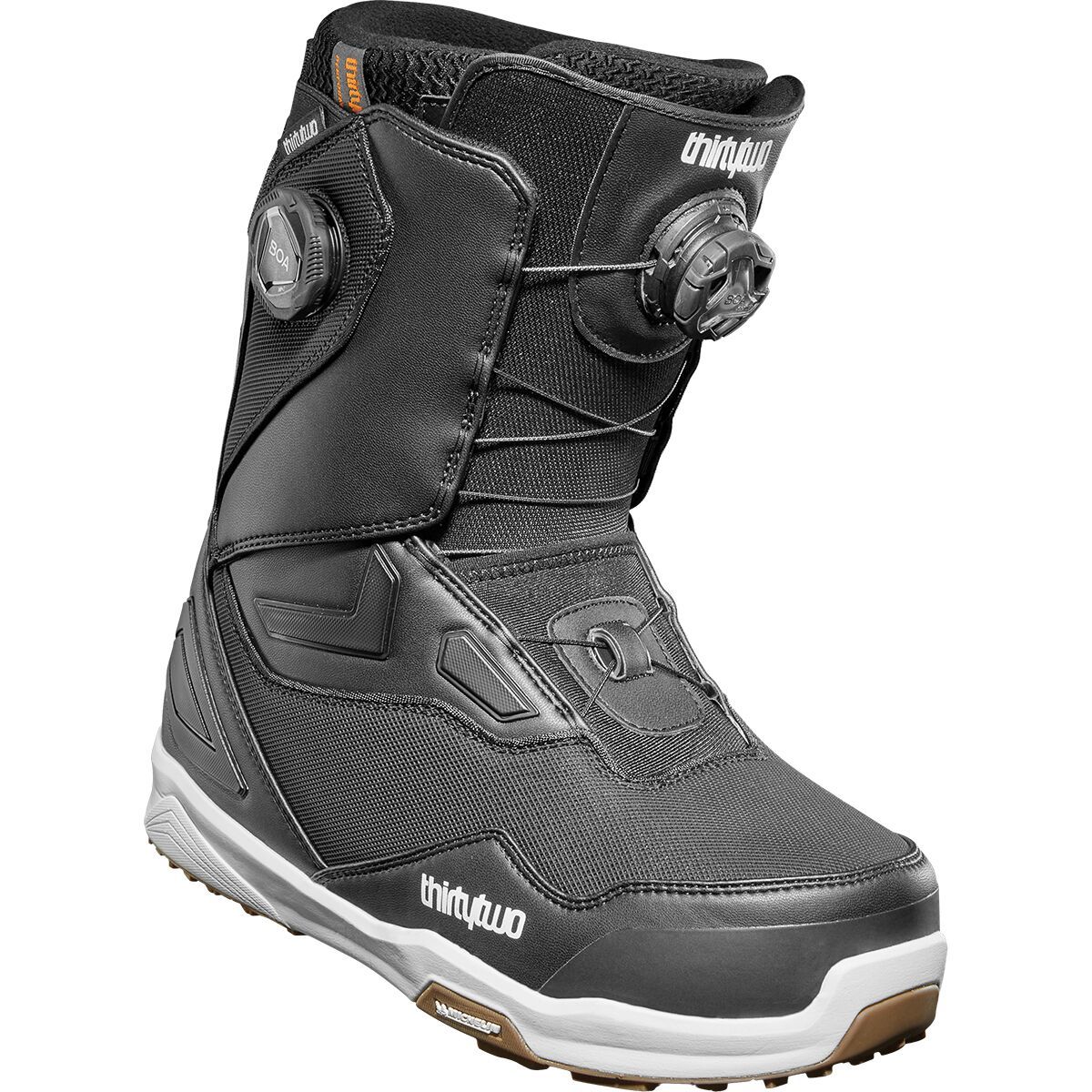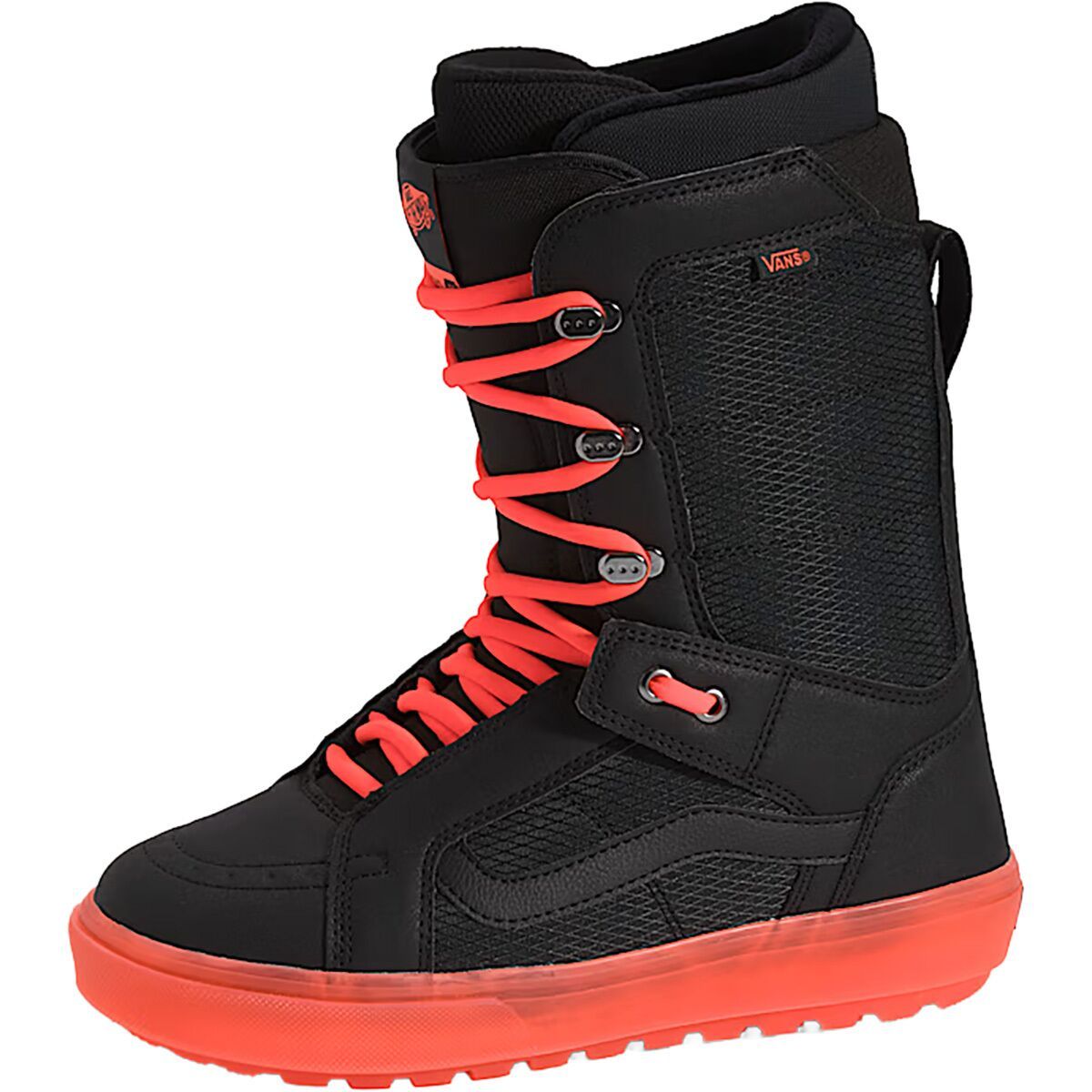Most boot guides tiptoe around wide feet like it’s a niche problem. It isn’t. I have big feet. I have wide feet. I’ve spent years jamming them into painful boots, so trust me when I say I get it.
There are two types of wide boots out there. The ones that are actually wide and the ones that are “not officially wide but riders with big feet end up in them anyway.” Both can work. What matters is toe room, midfoot volume and not losing feeling in your forefoot halfway down a run.
I’ve taught a lot of wide footed riders and fitted plenty more in the shop. If your boot is too narrow you ride tense and everything feels harder than it should.
These are the best snowboard boots for wide feet in 2026. No squeezing, no praying the liners will pack out, no hoping your toes just magically shrink. Just solid picks that let your feet breathe, so you can ride better.
🏆 Best Overall Pick
The Burton Ruler BOA Wide is the wide fit boot that works for most riders. You get real room in the forefoot, solid heel hold and enough support to take you from first turns to steep carving without crushing your feet. Comfortable, versatile and one of the easiest wide boots to get right on day one.
Top 3 Picks
Wide Snowboard Boot Reviews
1. Burton Ruler BOA Wide Best Overall
- Flex: 6 out of 10
- Lacing: Dual BOA
- Liner: Imprint 2 heat moldable
- Outsole: Lightweight DynoGRIP style rubber
- Fit notes: True wide fit with solid heel hold for all mountain progression
The Ruler Wide is the boot I recommend to most riders with wider feet because it just works. Not perfect. Not flashy. Just reliable. It gives you a proper wide toe box but still holds your heel, which is harder to find than it should be.
Flex sits in that middle zone that suits the average resort rider. If you ride a reasonable portion of the season, mix groomers with side hits and the odd pow day, the Ruler fits the bill. It feels comfortable fast, stays warm and does not punish you for being a bit rusty on day one.
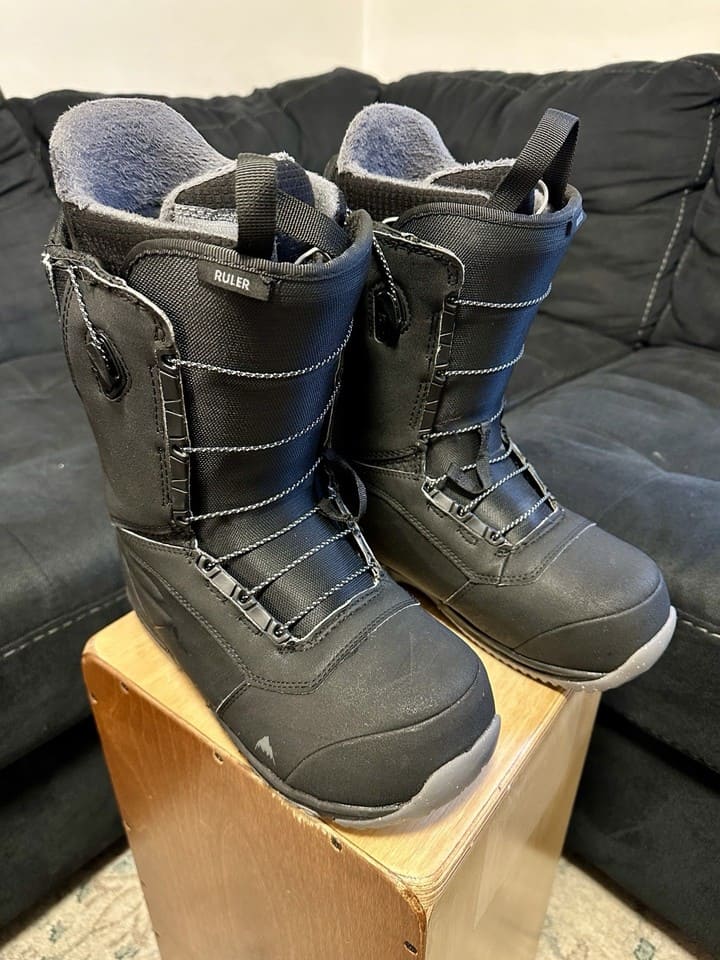
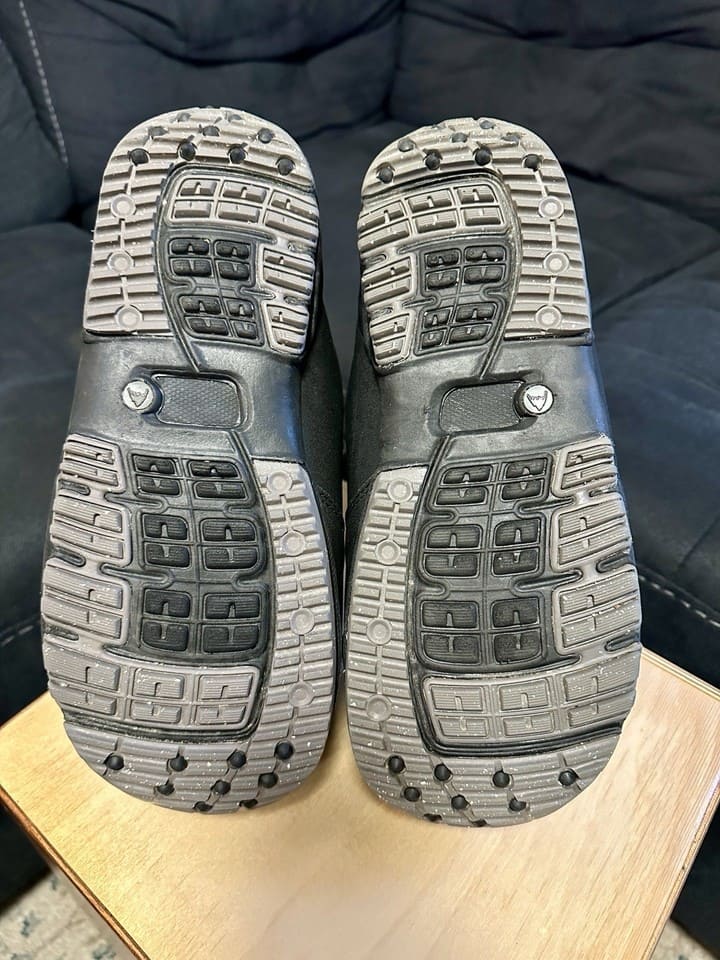
If you ride very fast or like a stiff, aggressive feel, this is not that boot. For everyone else, it is solid, predictable and easy to live with. I have seen it solve a lot of foot pain for riders who thought they were stuck suffering forever.
Pros
- Wide without turning sloppy
- Dual BOA gives dependable heel hold
- Breaks in quickly
- Warm and cushioned for long days
- Great middle ground for most riders
Cons
- Not stiff enough for aggressive riders
- Can feel bulky in tighter bindings
2. K2 Maysis Wide Best Premium
- Flex: 7 out of 10
- Lacing: Dual BOA with internal heel hold
- Liner: Intuition Control Foam heat moldable
- Outsole: Grippy rubber with cushioned midsole
- Fit notes: True wide fit with strong heel lock
Most wide boots struggle to balance space and support. The Maysis Wide nails it. The forefoot is roomy but that Conda heel hold system clamps your ankle properly, so your foot actually stays put. When you tighten it right, you forget about it.
Flex sits firmer than mid and stays that way through the season. This is the one I point intermediate and advanced riders toward if they want something they can trust at speed. It feels planted on edge and the liner molds nicely after a couple of days.


It is not the soft, forgiving option. If you are brand new, it will feel like a lot of boot. But if you ride real terrain and your old boots mashed your toes, the Maysis Wide is the upgrade that finally lets you focus on the snow instead of your feet.
Pros
- Excellent heel hold without sacrificing width
- Stable at higher speeds
- Reliable flex that does not collapse mid season
- Liner shapes well after a couple of rides
- Great for stronger or heavier riders
Cons
- Too stiff for most beginners
- Runs warm during spring days
3. ThirtyTwo TM-2 Wide Best Advanced
- Flex: 7 to 8 out of 10
- Lacing: Traditional lace with internal harness
- Liner: Performance liner, heat moldable
- Outsole: Performance rubber with good board feel
- Fit notes: Extra forefoot width with strong support for advanced riders
Prefer the Merrill colorway? See it here .
Thirtytwo have been making boots longer than most of you have been alive (not me, I’m old). They make some seriously great gear.
The TM 2 Wide is the most supportive wide boot on this list. If you ride fast, like steep terrain or just want more control, this is the one that feels closest to a true performance boot without crushing your forefoot. The structure of the liner is firmer than the other two and it holds its shape even after a heavy season.

Flex is strong. You feel it right away. It is not punishing, but it asks you to ride properly. If you already know what you are doing, that is a good thing. If you are still learning basic turns, it will feel like too much boot.
Fit wise, it gives space up front but keeps the midfoot calm. ThirtyTwo’s heel hold kit is actually worth using if your heels tend to lift. Once you get it right, the boot stays consistent day after day.
This is not a beginner choice. It is a wide boot for riders who want support and control.
Pros
- Strong, consistent support
- Wide toe box without losing response
- Heel hold kit actually works
- Great for steeper terrain and faster riding
- Does not soften too quickly
Cons
- Break in takes longer
- Not ideal for new riders or casual cruising
4. Vans Hi Standard OG Best Budget
- Flex: 4 out of 10
- Lacing: Traditional lace
- Liner: Soft, heat moldable Vans liner
- Outsole: Waffle style tread with good grip
- Fit notes: Naturally roomy forefoot with relaxed, skate style feel
The Hi Standard OG has been around forever because it solves a simple problem. You want a soft boot with a roomy toe box that does not feel like a rental. Vans nailed that shape years ago and luckily they have not messed with it too much.
It is not technically a wide boot, but it fits wider than most traditional lace options. The toe box is open, the midfoot is not tight and the liner does not squeeze your forefoot after a few hours. If you have slightly wider feet and want something easy going, this is the cheapest good option.
Flex is soft and forgiving, which is great for learning and park laps. It is not supportive at speed and not meant to be. If you are on a budget or just want a mellow, comfy boot that will not crush you, the Hi Standard OG does the job.
Pros
- Roomy toe box (for a non-wide boot)
- Soft and easy to flex
- Classic, simple lace system
- Comfortable right out of the box
- Cheapest good option for wider feet
Cons
- Less supportive for hard-chargers
- Liner packs out faster than others
5. DC Phase Best Beginner
- Flex: 4 to 5 out of 10
- Lacing: Traditional lace
- Liner: Cushioned, heat moldable DC liner
- Outsole: Lightweight rubber cupsole
- Fit notes: Slightly wider feel in the forefoot. Ideal for new riders and wide feet on a budget
The DC Phase is the definition of a no nonsense boot. It’s one if the best boots for beginners, and is a similar vibe to the Vans option. Cheap, simple, slightly wider than average and way more comfortable than you expect at this price.
Flex is on the softer side and stays that way. It is not high performance and it is not trying to be. You buy the Phase when you want something that rides fine, fits wider feet well enough and does not wreck your bank account.
The liner is basic but it does not have that brick feeling some budget boots have. If you are learning, riding casually or just want a cheap backup boot for rope tow days, the Phase is honestly decent. Just do not expect miracles when you start charging.
Pros
- Surprisingly comfy for the price
- Slightly wider fit than most budget boots
- Simple and predictable flex
- Great value pick for casual riders and beginners
- Easy to get along with from day one
Cons
- Not designed for advanced technical riding
- Not technically a "wide" boot - best for slightly wide feet
6. Burton Highshot X Step On Wide Best Step-On
- Flex: 6 out of 10
- Lacing: Dual BOA
- Liner: Heat moldable Burton liner with good ankle hold
- Outsole: Step On specific outsole and interface
- Fit notes: Wide platform with Step On convenience
Step On finally has a proper wide option and it is genuinely good. The Highshot Wide feels like the Ruler Wide but with the Step On interface added. The shape is generous across the forefoot and the dual BOA setup keeps your heel locked in. The Step On system still engages cleanly.
If you like cruising, carving and want zero faff at the lift, this is the easiest daily driver for wide feet. Getting in and out is instant. Response is predictable. Support is strong enough for real terrain but still comfortable for all day resort laps. Although Burton rate it “5-8” which is confusing, I’d say it’s around a 6.
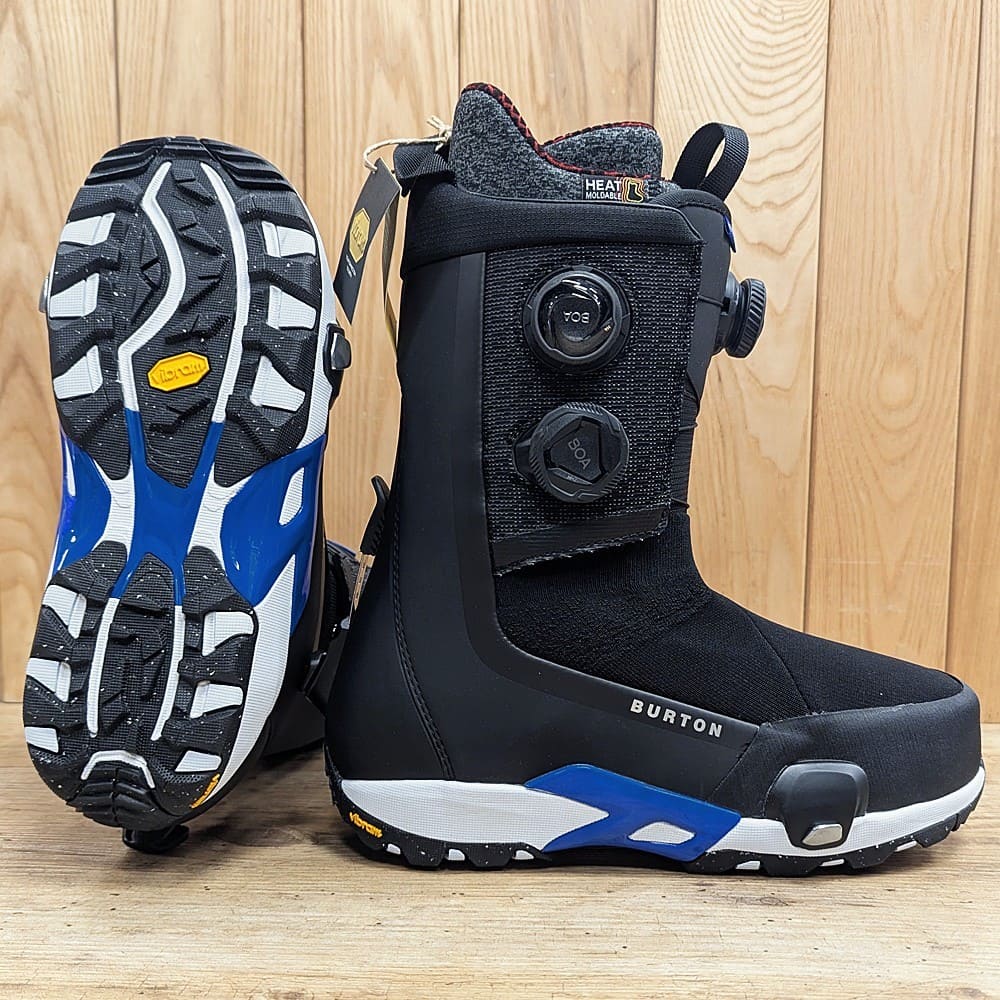
It is more money and you obviously need Step On bindings. If you already run Step On or want the convenience, this is the wide boot that finally fits without forcing your foot into a narrow shell. It feels secure and planted, which was not always the case with earlier Step On boots.
Pros
- Finally a true wide Step On boot
- Secure heel hold with dual BOA
- Fast in and out for lift laps
- Comfortable for long days
- Responsive enough for strong intermediates and above
Cons
- Pricey once you factor in bindings
- Not ideal for beginners who want a softer feel
7. Burton Limelight BOA Wide Best Women’s
- Flex: 4 to 5 out of 10
- Lacing: BOA system for easy entry
- Liner: Imprint liner with plush warmth
- Outsole: Lightweight Burton women's specific outsole
- Fit notes: Women specific wide fit with warm, forgiving feel
The Limelight Wide fixes one of the biggest issues for women riders. Most women’s boots run quite narrow which can cause hot spots. This boot gives real room across the forefoot without turning the whole boot into a loose slipper.
The dual BOA setup tightens evenly and the liner molds quickly after a couple of days. Flex is right in that middle zone where beginners feel supported but not overpowered and progressing riders still get enough response for carving and exploring more terrain.
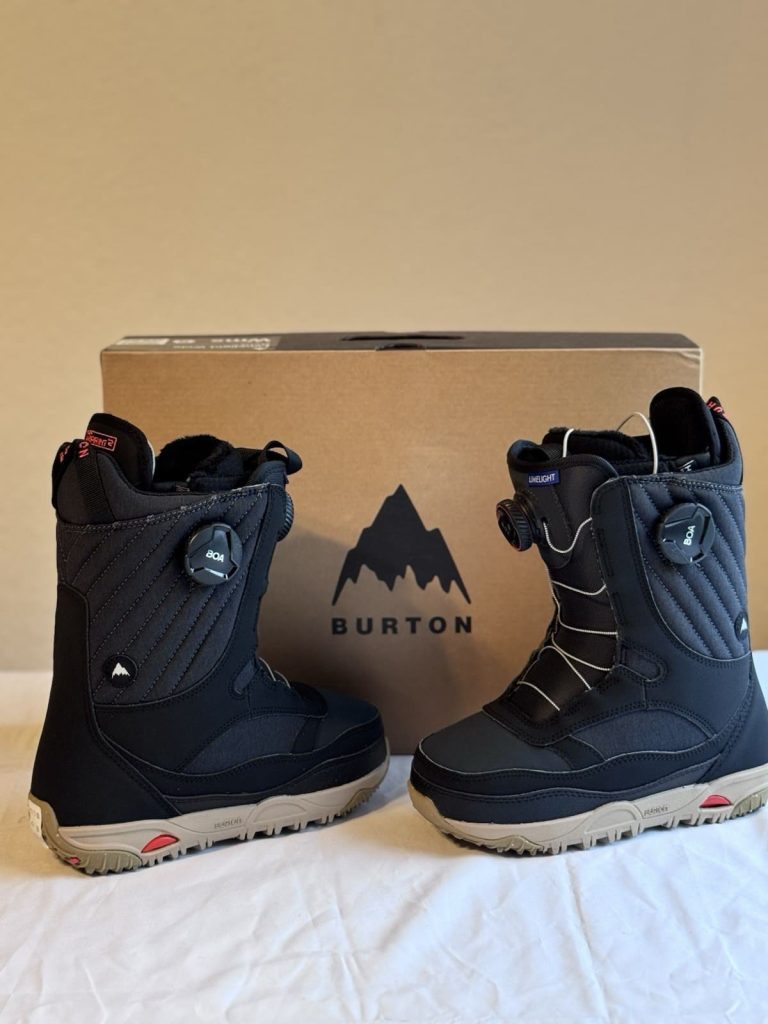
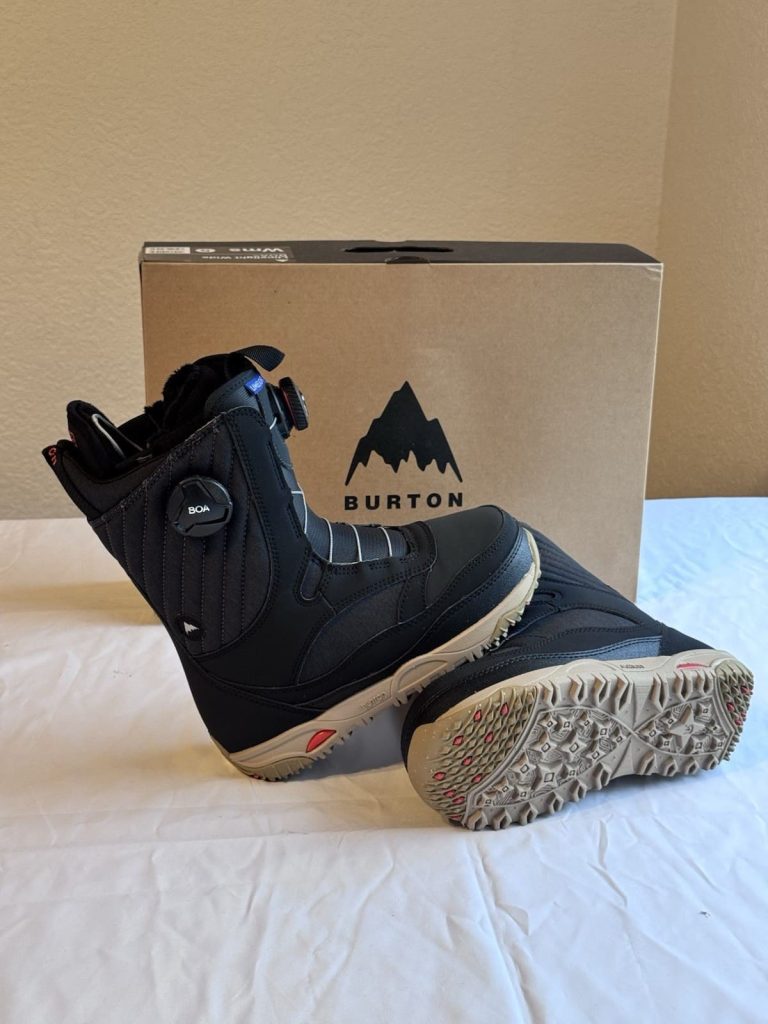
Warmth is solid and comfort stays consistent through a full day. If your old boots crushed your toes or made your foot go numb by lunchtime, this is a huge upgrade. It feels stable without being stiff and it works for almost every resort-based riding style. Definitely the best wide snowboard boots for women.
Pros
- A legit wide option for women
- Dual BOA is quick and supportive
- Comfortable for long days on snow
- Liner molds fast for a better fit
- Great for beginners to strong intermediates
Cons
- Not stiff enough for advanced charging
- Price sits slightly high
Comparison Table
| Boot | Flex | Lacing | Liner | Fit | Style | Score | Price |
|---|---|---|---|---|---|---|---|
| Burton Ruler BOA Wide | 6 out of 10 | Dual Zone BOA | Imprint 2 heat moldable | True wide with strong heel hold | All mountain progression | 4.7/5 | $359 |
| K2 Maysis Wide | 7 out of 10 | H4 BOA plus Conda heel lock | Intuition Control Foam 3D | Wide forefoot, locked in ankle | All mountain premium | 4.8/5 | $379 |
| ThirtyTwo TM 2 Wide | 7 out of 10 | Double BOA | Performance liner, heat moldable | Supportive wide fit for stronger riders | Advanced all mountain | 4.8/5 | $399 |
| Vans Hi Standard OG | 4 out of 10 | Traditional lace | V1 Ultracush | Naturally roomy toe box | Beginner and park friendly | 4.6/5 | $199 |
| DC Phase | 4 out of 10 | Traditional lace | Comfort liner with EVA | Slightly wider feel, relaxed fit | Beginner and value | 4.5/5 | $199 |
| Burton Highshot X Step On Wide | 6 to 9 out of 10 | Dual Zone BOA with Step On | Supportive heat moldable liner | Wide platform with Step On interface | Step On all mountain | 4.9/5 | $709 |
| Burton Limelight BOA Wide (Women) | 4 out of 10 | Dual Zone BOA | Women specific Imprint 2 | Roomy women wide fit | Women beginner and progression | 4.7/5 | $399 |
Wide Boot Buying Guide
Fit
Wide boots should let your forefoot sit naturally without squeezing the sides. If your toes go numb or you feel pressure along the outside of your foot in the first few minutes, the fit is wrong. A true wide boot will feel relaxed across the front but still hold the back of your foot in place.
Heel Hold
A wide boot should never feel loose. Your heel needs to stay down when you flex forward or you lose control on edge. If your heel lifts, the boot will feel sloppy no matter how comfortable the forefoot is.
Flex
Soft and medium boots work best for beginners and mellow riders because they forgive mistakes and stay comfortable for long days. If you ride steeper terrain or push harder through your turns, go a touch stiffer so the boot supports you instead of folding under you.
Liners
Heat moldable liners help a lot with wide feet. They remove early pressure points and shape around your foot so you are not waiting all season for a break in.
Binding Fit
Wide boots take up more space, so make sure your binding can handle it. You don’t want to max out the straps or squash the edges of your boot into the frame.
The One Rule
Never size up thinking it will solve a width problem. Bigger boots only create heel lift and sloppy turns. A proper wide boot should feel right from the start with no pain and no counting down the minutes until you can take them off.
Final Thoughts
I ride the Maysis Wide most days because it fits my foot and gives me the support I want. I grab the TM 2 Wide when I feel like riding something more locked in. Plenty of riders end up in the Ruler Wide because it feels good straight away and works for almost every kind of riding. That’s what makes it the best wide boot for 2026.
In the end you just want the boot that matches your foot and the way you ride. If it feels good as soon as you stand up in it and your heel stays put, that’s your boot.




